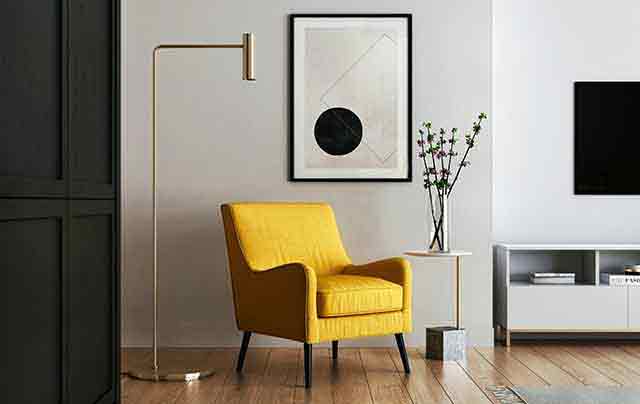# Embrace Minimalist Elegance: Unveiling the Secrets of Scandinavian Interior Design
Scandinavian interior design has long been associated with minimalism, functionality, and a profound sense of ease and comfort. Originating from the Nordic countries of Sweden, Denmark, Norway, Finland, and Iceland, this design philosophy captures the essence of living well by combining simple elegance with utility. This article delves into the core principles that make Scandinavian interior design a beacon of modern living, illustrating how it can transform everyday spaces into bastions of serene beauty.
The Roots of Simplicity
At the heart of Scandinavian interior design lies a history shaped by environmental and cultural influences. The Nordic region is known for its extreme weather conditions, with long winters that are both dark and cold. This has historically led to an interior design ethos aimed at countering these elements by fostering bright, warm, and cozy indoor environments. Pale hues and natural materials are favored to create spaces that serve as sanctuaries against the bleakness of the outside world.
Color Palette: The Canvas of Calm
A hallmark of Scandinavian design is its carefully curated color palette. It leans heavily towards whites, beiges, soft grays, and muted blues or greens colors that are reminiscent of the Scandinavian landscapes. These hues play a crucial role in reflecting natural light, thereby enhancing the sense of space within a room. The use of such a restrained color scheme lays the foundation for a tranquil setting that soothes the mind and provides an understated backdrop for daily activities.
Nature Indoors: A Breath of Fresh Air
Incorporating elements from nature is a distinctive feature of Scandinavian interior design. Wood in various forms from pine and oak to ash and birch is commonly used in flooring, furniture, and as decorative accents. This not only adds warmth and texture to interiors but also strengthens the connection between home dwellers and the natural world. The inclusion of greenery through indoor plants introduces vitality and purifies the air, further enhancing the sense of well-being.
Functionality & Form: A Marriage Made in Design Heaven
The mantra 'form follows function' is deeply ingrained in Scandinavian design principles. Every piece of furniture or decor is selected with both its purpose and aesthetic value in mind. From modular shelving units to ergonomic chairs, the focus on functionality ensures a clutter-free space that is efficient yet inviting. These items often feature clean lines and smooth surfaces that exhibit exceptional craftsmanship and timeless appeal.
Light: The Quintessential Illuminator
Lighting plays a pivotal role in Scandinavian interiors it is both practical and mood-enhancing. Natural light is maximized through large windows that often remain unobstructed by heavy curtains or blinds. In artificial lighting scenarios, designers employ a combination of overhead lights, focused task lighting, and softer accent lamps to create layers that add depth to any room. Iconic lighting fixtures are also chosen for their sculptural beauty, becoming statement pieces within minimalist surroundings.
Textiles & Textures: The Subtle Sensory Experience
Textures provide another layer to the sensory experience within Scandinavian homes. Soft fabrics like wool, cotton, linen, and sheepskin are introduced through throws, cushions, and rugs to balance out the simplicity of other design elements. These textiles offer physical comfort while also contributing visual warmthan essential aspect during chilly Nordic winters.
Accents & Artwork: Expressing Individuality
Despite its minimalist foundation, Scandinavian interior design embraces personal expression through carefully chosen accents and artwork. Items such as ceramics, vases, candles, or books lend character to rooms without overwhelming them. Artwork serves as an intentional focal point simple yet powerful pieces are selected to inspire thought or evoke emotion while maintaining harmony with other design elements.
Sustainability: A Conscious Choice
Sustainability is at the forefront of Scandinavian design philosophy. Longevity trumps fleeting trends when selecting furniture pieces; preference is given to high-quality materials designed to withstand the test of time. This eco-friendly mindset extends beyond just furniture it includes using energy-efficient solutions and recycled materials where possible. Such practices reflect a broader commitment to living responsibly without sacrificing aesthetics.
Embracing Hygge: The Essence of Coziness
The concept of 'hygge,' integral to Danish culture but adopted across Scandinavia, captures the pursuit of coziness and contentment through enjoying life's simple pleasures. It manifests in interiors as intimate spaces where one can relax alone or gather with friends spaces that foster connection and contentment through warmth and softness.
Conclusion: A Timeless Trend
More than just a passing trend, Scandinavian interior design embodies a sustainable approach that highlights well-being and balance with nature's rhythms. As we've explored its many facets from muted palettes to functional furnishings it becomes evident why this style continues to enchant people around the globe.
Incorporating Scandinavian interior design into your home means embracing an ethos that values simplicity over complexity, enduring quality over disposability, and serene comfort over ostentatious luxury. It encourages us to create environments where lifes complexities are soothed by designs unassuming simplicity a guiding principle from which anyone can derive inspiration for their own living spaces.
